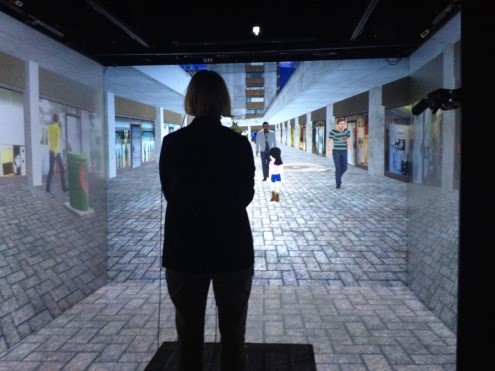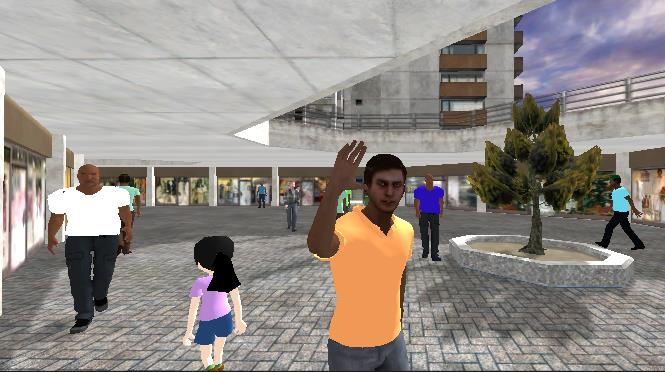Title : Virtual Crowds. A contributing factor to Presence in Immersive Virtual Environments.
Project Lead : Yiorgos Yiorgos Chrysanthou From : University of Cyprus (Cyprus)
Dates : from -- to 2015-02-24 23:06:00
Description :
Motivation and objectives :
In certain applications of virtual reality we aim to immerse the users in a reconstructed virtual world, fooling theirs senses into believing it as real. Although many of the worlds that we would like to use, should ideally include virtual humans, quite often the latter are omitted due to the complexity of implementing their behaviour correctly. This is especially true for crowded environments where complex interactions should be appearing between the avatars and with the user. Recent progress in graphics hardware and software technologies have brought realistic animated humans within easy reach of a developer. One can buy a virtual character ready rigged and use it in a modern game engine. On the behaviour side though, things are different. Current state of the art engines include moistly path planning and collision avoidance methods. Adding behaviour to the characters is a slow and painstaking process with often questionable results. The aim of the proposed project is to investigate how far a developer needs to go when implementing a virtual crowd in an immersive environment. We aim to examine some of the characteristics of a virtual crowd and see if they are important in increasing the immersion of the user, and thus worthy of spending the effort to implement.
Teams :
The proposed work will be carried out in the Graphics and Hypermedia Lab of the Department. The lab was founded in 2002 with the purpose of conducting research and postgraduate studies in the areas of Computer Graphics, Virtual & Augmented Reality, Visualisation and Simulation. Currently it hosts 1 academic staff, 2 post-docs, 3 PhD and several masters and undergraduate students. It has its own VR set up a 3 wall system and a head mounted display as well as a full motion capture system. The lab has been very active since its founding, attracting research funding from various sources, being involved in international collaborations and organising conferences in the area. Currently it has 4 running projects (3 local and 1 EU funded).
Dates :
starting date : 18 November, 2013
ending date : 29 November, 2013
Facilities descriptions :
http://visionair-browser.g-scop.grenoble-inp.fr/visionair/Browser/Catalogs/REACTOR.UK.html
Recordings & Results :
The theme of this project was the development of more sophisticated behaviour models for virtual characters in a crowd and to test this in an immersive virtual environment presented in the UCL CAVE. The overriding goal was to investigate how far a developer needs to go when implementing a virtual crowd in an immersive environment e.g. by examining which characteristics are important in increasing the sense of presence of the user and are thus worthy of the overheads (in development and rendering computation) of implementation. A scenario was developed in Unity3D and populated with virtual characters which were programmed to exhibit different levels of interactive behaviour as the participant walks through the crowd. Each participant experienced all 3 levels of crowd interactivity and subjective assessments of presence (the Witmer and Singer presence questionnaire) were used after each trial. Initial data analysis pointed to a significant correlation between measures of presence and interaction levels of the virtual characters.
Conclusions :
- Unity3D application deploying "crowds" algorithm successfully developed and ported to UCL CAVE - Experiment trials developed to manipulate collision detection and user interaction - Experiment conducted on 20 participants using a within-groups experiment design (so 60 trials conducted in total). - Data compared to similar trials conducted using a single screen setup (away from UCL) - Significant results have been written up and are currently under journal review
Project Images :


Other project resources :
visionair.pdf
.

VISIONAIR / Grenoble INP / 46 avenue Felix Viallet / F-38 031 Grenoble cedex 1 / FRANCE
Project funded by the European Commission under grant agreement 262044

Project funded by the European Commission under grant agreement 262044
